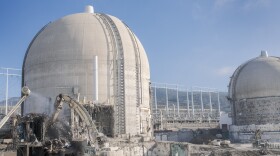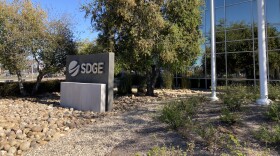Homeowners still struggling to rebuild their lives after last fall's wildfires are preparing for downpours that could bring more than a foot of rain to some mudslide-prone mountain canyons.
A trio of rainstorms - possibly the most rain the region has seen in three years - is expected to hit Southern California this weekend, with the first band of showers arriving Thursday. The heaviest precipitation is expected overnight Friday, with lowland areas around Los Angeles and Orange County getting a total of up to 4 inches and mountain areas up to 6 inches.
Mountains stretching from Santa Barbara, Ventura, Los Angeles and San Bernardino counties could see up to 9 inches of rain, with some south-facing slopes weathering downpours of up to 15 inches, said Ken Clark, a senior meteorologist at Accuweather.com. Some of those areas are still recovering from October wildfires that denuded mountain canyons, leaving them particularly prone to mudslides and flash flooding.
The mountains around Malibu could get up to 8 inches of rain, and higher elevations in San Diego County could get up to 7 inches, Clark said.
"You're going to have roads getting flooded, you're going to have water channels filling up. But in the burned areas, this could be disastrous," he said. "I would say, save yourself right now by getting out. It could be a life-threatening situation."
In preparation for the storms, officials urged homeowners in mudslide-prone areas to stock up on sandbags, monitor the news for evacuations and keep an eye on local streams and flood control channels for flooding. Fire stations throughout the region were handing out free sandbags.
In Malibu, where a November fire charred 4,000 acres and destroyed 50 homes, crews placed tarps and sandbags to protect the barren land. The Los Angeles Department of Water and Power said additional crews were standing by to restore power if the storm knocks down power lines or power poles.
In Orange County, the U.S. Forest Service has almost finished using airplanes to spread "hydro-mulch" - a mixture of wood pulp and a gluey substance - on about 18 percent of the area burned in the Santiago Fire to keep the fragile soil in place.
The $5 million project has focused on the most intensely burned areas on Forest Service land, said Tom Lavagnino, a spokesman for the Forest Service.
"On an average rain event, it probably would be successful," he said. "But if we get a one-in-50-year or 1-in-100-year flood event, nothing we do is going to help."
Wind gusts between 60 mph and 80 mph in the mountains and 20 mph to 40 mph in the lowlands are expected along with the rain, Clark said.
A team of 13 teenagers from the Orange County Conservation Corps was busy Thursday morning placing gravel-filled bags along a 240-foot stretch of Modjeska Canyon Road.
The crew had an entire dump truck full of bags to place in the area burned bare by fall wildfires and at risk of flooding.
"We get a rhythm going and it's not too bad," said Simon Villegas, 21.
Down the road, Judith McAllister was walking her dogs with a friend and said her main concern was that the storm warning would mean having to evacuate the canyon for the third time in just a few months.
"Just constant evacuations and when, when do I do it? Do I need to make hotel reservations?" she asked.
The U.S. Coast Guard warned boaters that the storm could bring high seas and heavy swells, and recommended that they stay in port for the next several days.
The storm could dampen the San Diego Chargers' playoff game against the Tennessee Titans on Sunday. A Qualcomm Stadium official said that if the rain persists, the field will be covered by a tarp until one hour before the game.
The heavy rains come during a year that has turned out to be the wettest in some time.
Rain levels in downtown Los Angeles were at 97 percent of normal this week after two years of extreme drought. In San Diego, rainfall had already exceeded normal readings with about six months to go before the end of the rain year, which runs from July 1 to June 30.




